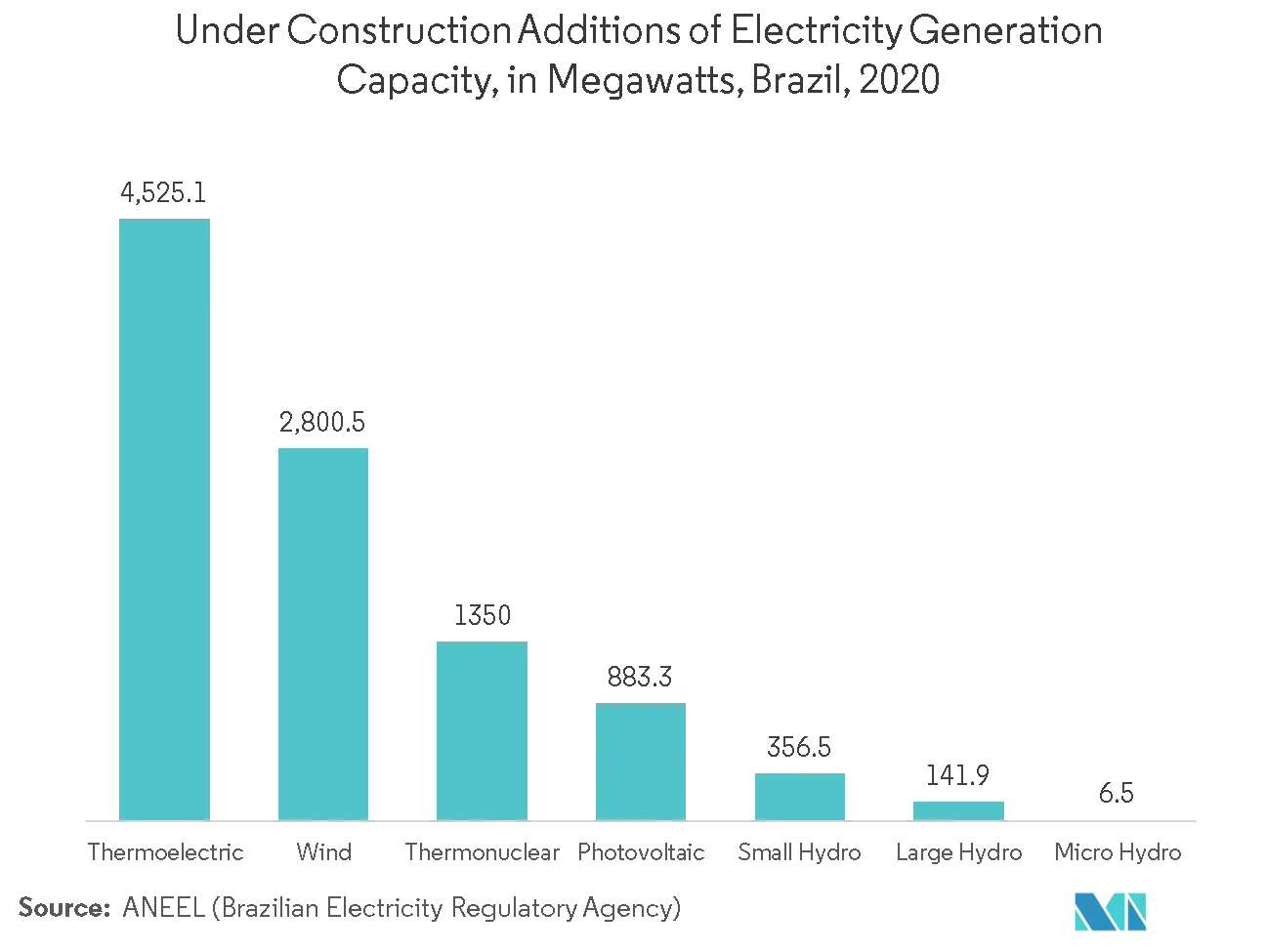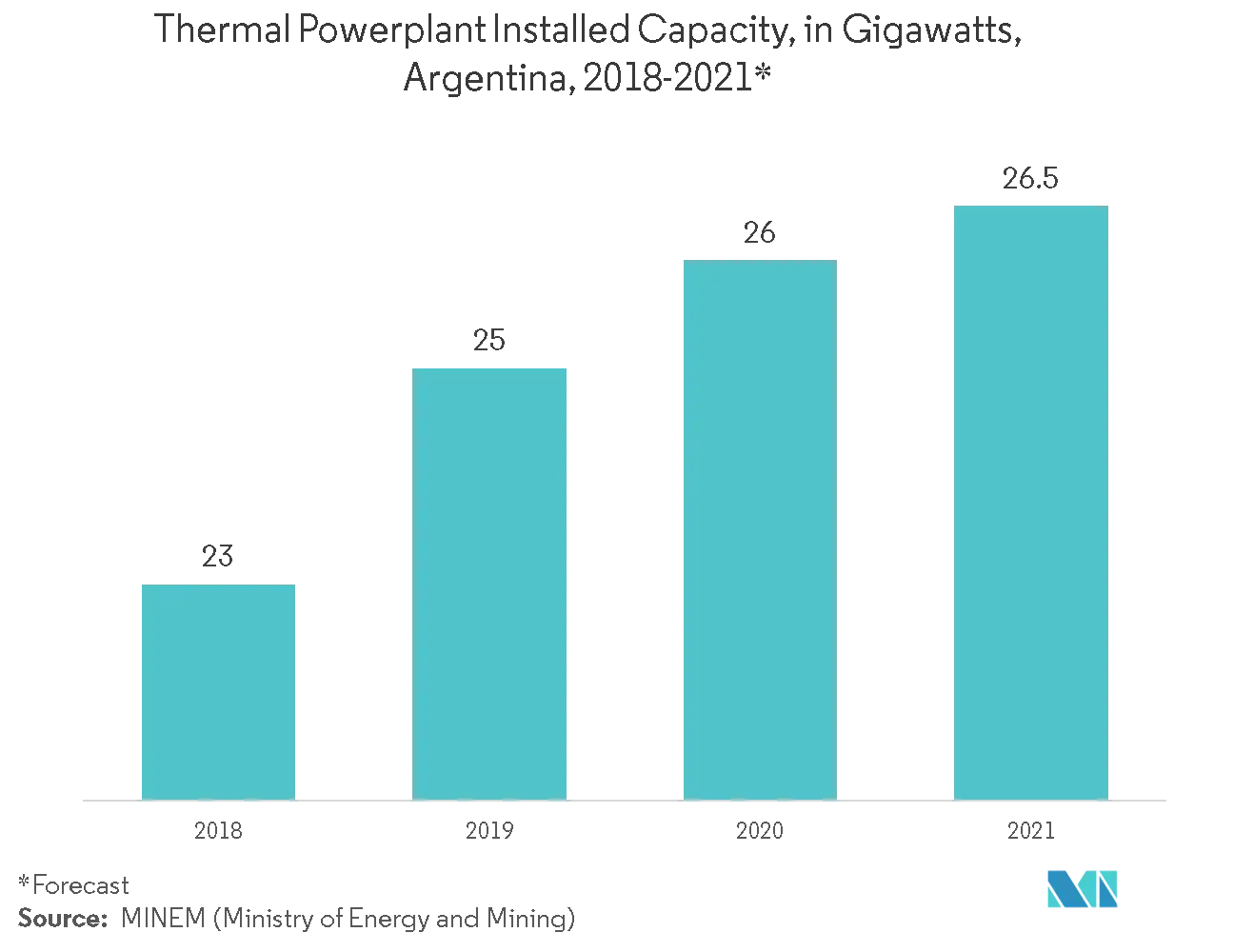Market Trends of Latin America Protective Relay Industry in Electric Utilities
This section covers the major market trends shaping the Latin America Protective Relay Market according to our research experts:
Increasing Capacity of Power Generation in Brazil Accounts For Significant Growth
- According to CCEE (Power Commercialization Chamber) Brazil, the electricity consumption in Brazil is expected to increase from 485.28 terawatt-hours in 2019 to 564.17 terawatt-hours in 2023. This consumption holds the demand for electricity generation capacity in powerplant, such as thermoelectric, wind, thermonuclear, etc. Owing to such demand, the usage of protective relay significantly increases in this country.
- The protective relay is designed to trigger a circuit breaker when a fault is detected, and the zones of protection are for generator and unit transformer, station transformer, and to many other components, The portion of a power system is de-energized through the opening of a fault interrupting device that has been operated by a protective relay output.
- The Brazilian electric system, with its large geographical area, is supplied mainly by hydropower plants, which are located on the rivers far from the load centers. The main generation source is Itaipu, which is a bi-national (Brazil & Paraguay) power plant has installed capacity of the 12,600 MW, which provides the need for protective relay for the fault detection.
- Brazilian electric system having more than 1150 transmission lines (greater than 69kV) at 138, 230, 345, 440, 500, and 750kV, linking over 600 substations primarily consider long transmission lines (30km). The highest voltage in use links the Itaipu power plant to the Sao Paulo area by two 565 miles (910 km) with 750-kV AC lines and two 600 miles (980 km) with 600-kV DC lines. To prevent the faulty fluctuations in the AC/DC lines, the demand for protective relay significantly increases in this location.
- Moreover, the 500-kV technology is based on compact transmission lines, self-supporting steel towers and have been successfully used on the Brazilian system for more than ten years and voltage inversion is dealt using positive sequence voltage memory polarized relays while overreaching due to sub-synchronous resonance between line and capacitor compensated for Zone 1 (when enabled) by means of a security factor.
- Further, to improve the voltage support and effective power generation with least fault generation GE Renewable Energy’s Grid Solutions business announced the Static Var Compensator (SVC) technology (providing dynamic voltage support with controlling the efficiency of the power supply) milestones in March 2020. The SVC enables the utility to operate at 115 kV and supply from +50 Mvar to -25 Mvar.
- It has improved network reliability and voltage performance in the area such as Santa Barbara D’Oeste, Brazil that operates at 440kV and supplies +/- 300 Mvar of power compensation. The SVC at Santa Barbara D’Oeste is one of the largest solutions delivered by GE, which assists in the applications of the traditional protective relay.

Thermal Powerplant Accounts for Significant Growth in Argentina
- Argentina generates its electricity using thermal power plants, which is based on fossil fuels (60%), hydroelectric powerplants (36%), and nuclear plants (3%), while wind and solar power accounted for less than 1%. There are around 9.5 GW of thermal power plants in the pipeline and planning stages in the country. These projects are worth around USD 9.92 billion and are expected to come into operation by 2025. With its pipeline projects, the demand for protective relay significantly rises in the future period.
- Players such as Central Térmica Ezeiza has aimed to increase its thermal plant capacity to 150 MW. The Commercial Operation Date (COD) is estimated to take place during 2020, which is being operated by Grupo Albanesi, and the commercial equipment authorization is being provided to Siemens.
- Further, Cutler-Hammer de Argentina (CHA), the formation by Eaton's Corporation and Electro Integral Sudamericana (EISSA) manufactures and distributes electrical equipment in Argentina. CHA includes all of the commercial assets of EISSA, which is being established to manufacture and distribute low- and medium-voltage switchgear, where the relay is most commonly used on medium voltage switchgear applications.
- Furthermore, following the approval of the Technical Department, Fanox Relays have been recently accepted by Edenor with most of the customers in Argentina. These relays (Self Powered O/C & E/F Protection Relay) have been installed in medium voltage switchgears providing automatic circuit breakers, and they substantially improve the electricity supply to customers by quickly detecting and isolating network faults in the powerplant. This added to the already installed relays in the region of Santa Fe, thus achieving the constant spread of FANOX relays.


